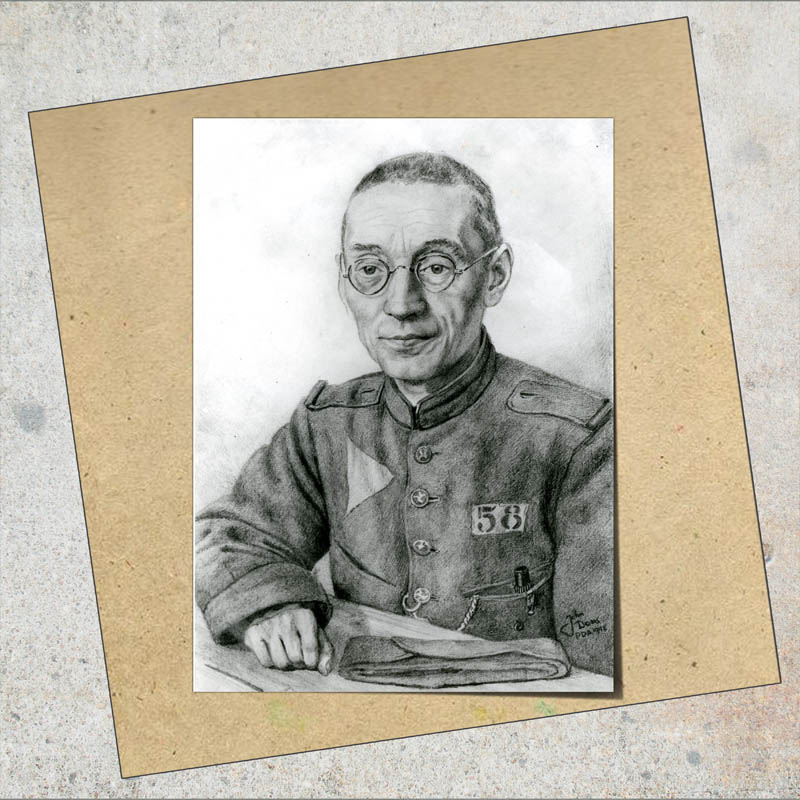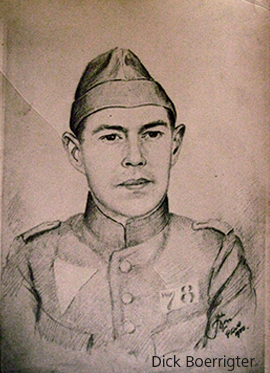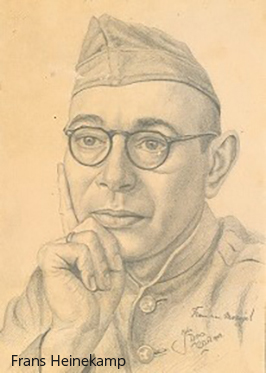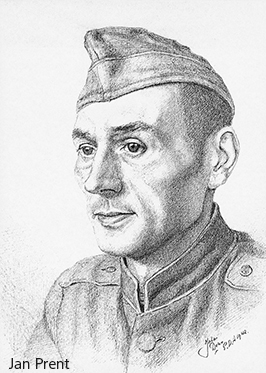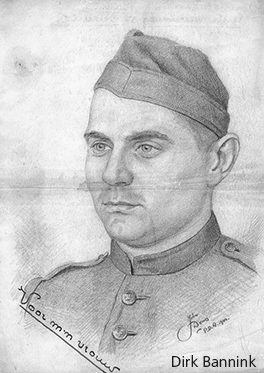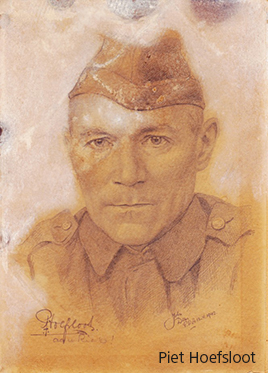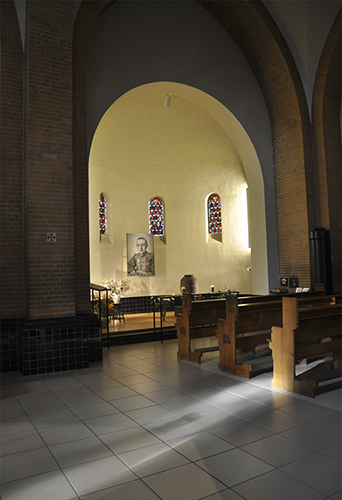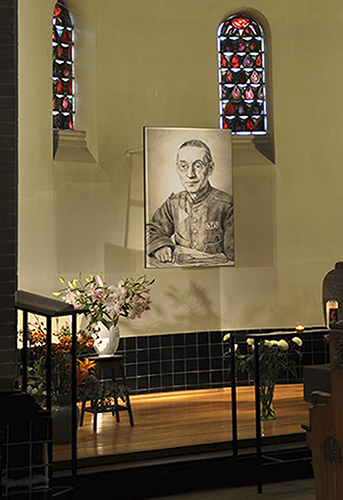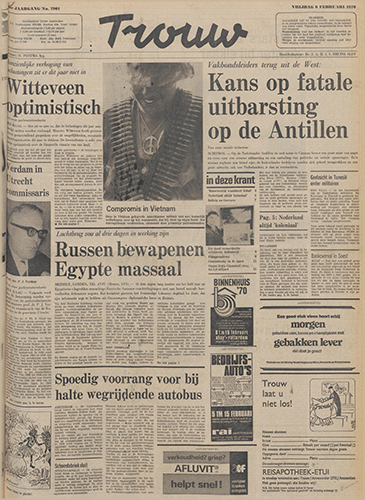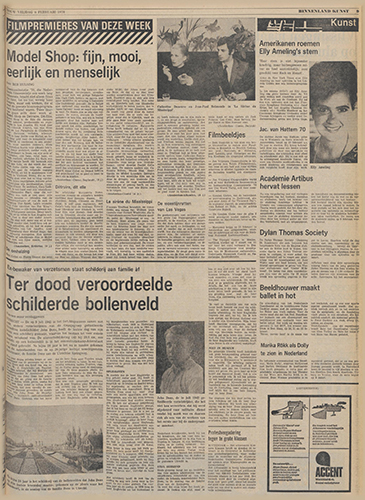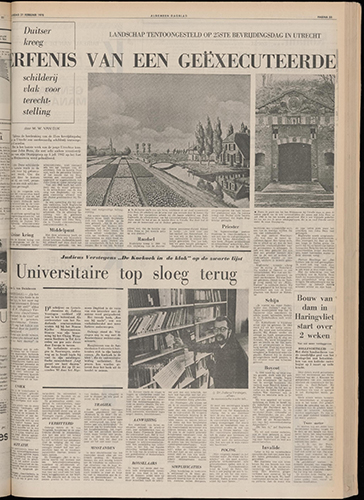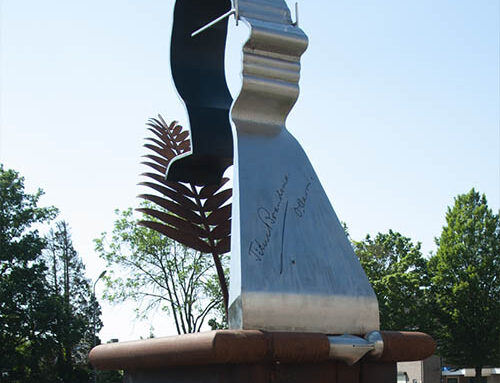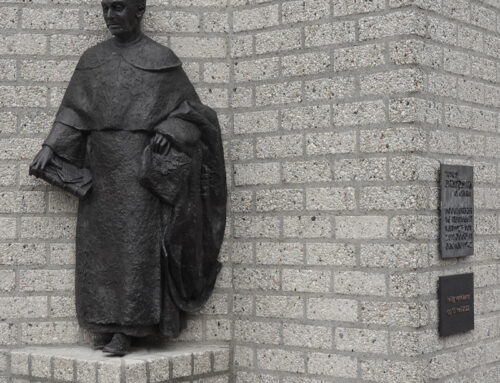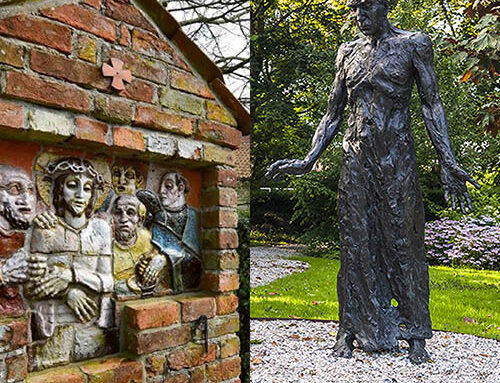

Titus Brandsma ended up in Camp Amersfoort because of his opposition to German measures to inhibit free speech and restrict educational freedom, as well as his protests against the measures taken against the Jewish population.
John Dons ended up there because of his participation in the resistance group the Oranjewacht.
The two became friends, and in the spring of 1942, John drew the picture of Titus before he was transferred to Dachau.
In addition to Titus, John made drawings of other fellow prisoners as shown here.
Translated with www.DeepL.com/Translator (free version)
De kunstenaar: John Dons
Datum: voorjaar 1942
Plaats: Kamp Amersfoort

When John Dons portrayed Titus Brandsma, both were imprisoned in the Polizeilicher Durchgangslager Amersfoort.Since both were in bad shape, John had open tuberculosis, they stayed in the infirmary.There he portrayed Titus – clandestinely -: attentive, kind and determined, powerful.
The effigy of Titus Brandsma forms the heart of the Titus Brandsma chapel in the Gedachteniskerk in Nijmegen.
The original pencil drawing is the size of an A-5 sheet. The original is in the Dutch Carmelite Institute in Boxmeer.
In the archives of the Carmelite Institute in Boxmeer is John Dons’ drawing of Titus Brandsma, not a copy but the original with John Dons’ complete signature.
The back reads, “Reproduction authorized, John Dons. He apparently anticipated that there would be a demand for copies.
John Dons was 26. Even though he knew he could be sentenced to death, he could think of the people who, in those dark days, could find support in the drawing he made at that moment of the little man across from him.

John Dons was born in Utrecht, the eldest son of Utrecht painter Bernardus (Bern) Dons and his wife Anthonia Margaretha Bührmann.
He learned to draw and paint at an early age. A week before his 16th birthday, his mother died of tuberculosis.
Around age 26, his sister Wia, who was two years younger, also died of TB. John himself had also become infected and suffered from open tuberculosis.
After German troops occupied the Netherlands in May 1940, several resistance groups were formed, such as the Oranjewacht, which was active in several cities.
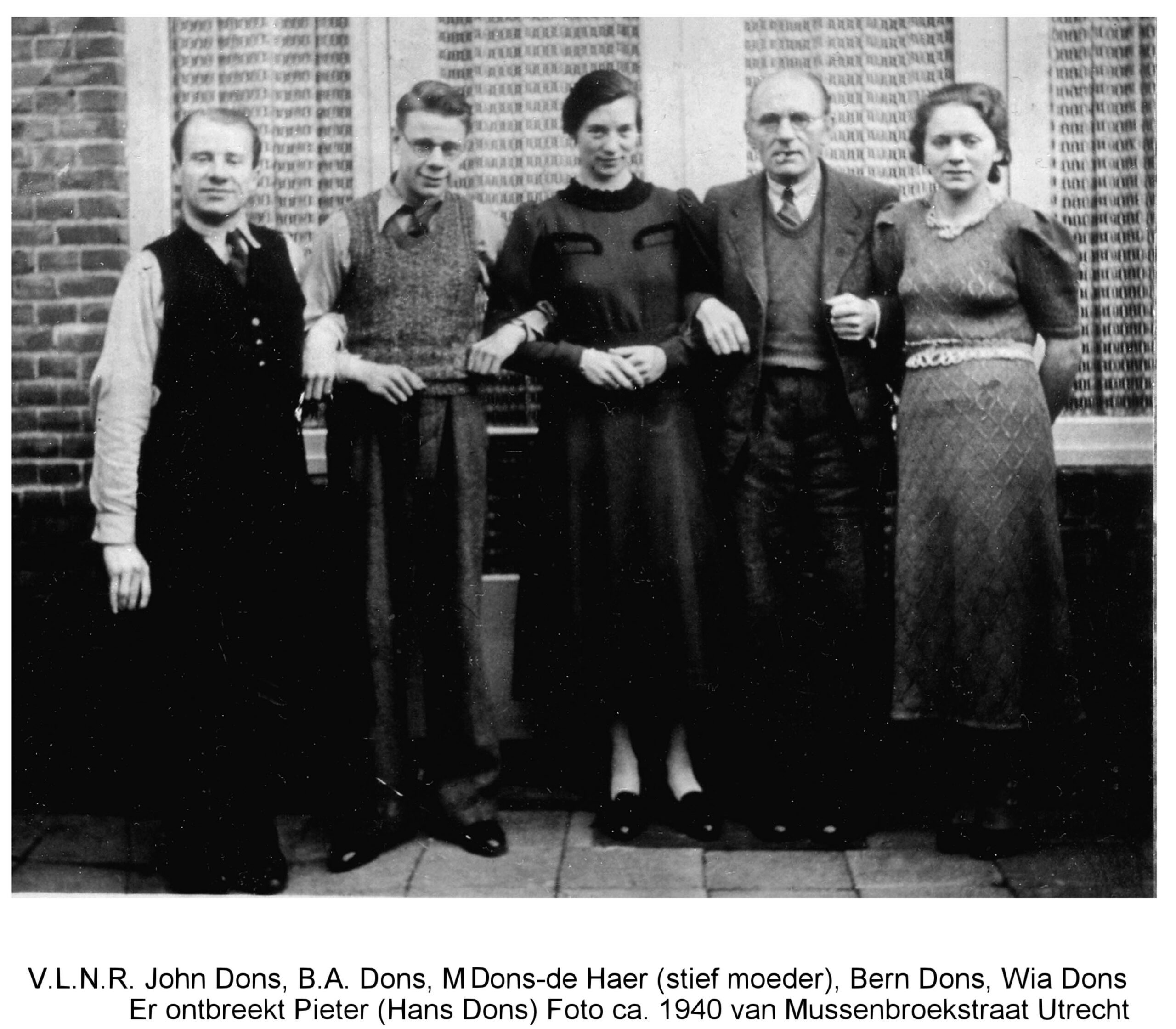
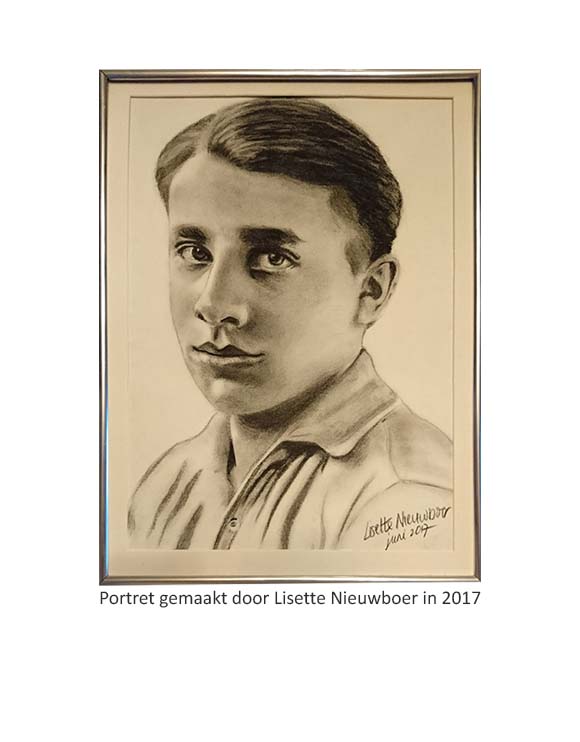
Camp Amersfoort was operational as a concentration camp from August 1941 and had a harsh regime of beatings, forced labor and starvation.
According to fellow inmate Dirk Folmer, Dons, who suffered from tuberculosis, soon began to look worse, walked in stirrups, but was treated reasonably as he portrayed the guards.
From his hand have survived drawings of several fellow prisoners, such as Titus Brandsma and Piet Hoefsloot.
At some point, John Dons’ sentence to disciplinary confinement was commuted to death.
In his farewell letter to his father and others, Dons wrote: “… I must write to you as my last letter that I am going to die courageously” and “I am glad to have been close to you this last night.” John Dons was executed on July 9, 1942, with eight other members of the resistance at the Fort near Rhijnauwen.

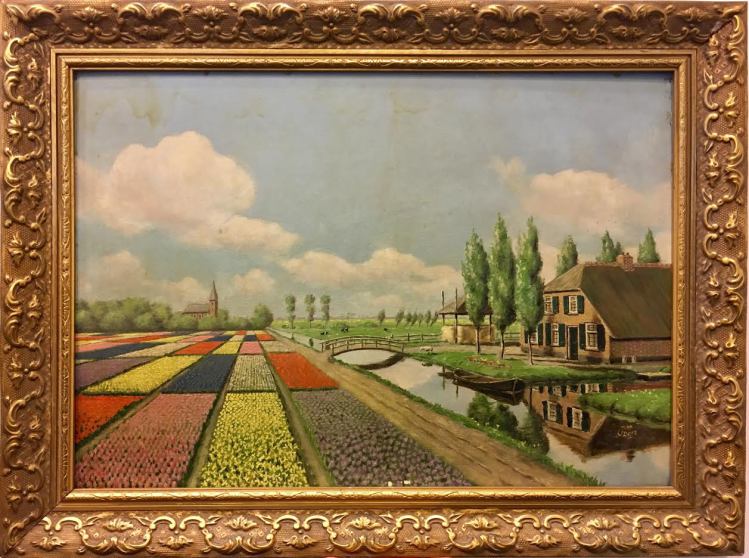
Just before he is executed, Utrecht painter John Dons makes a final painting. He gives it to SS man Willy Engbrocks, his guard in Camp Amersfoort. It hung on his wall for several years, but was never seen anywhere else. That is about to change.
Although a summer day, it is not very warm on Thursday, July 9, 1942. In the greenery outside Utrecht, at Fort Rhijnauwen, a German firing squad docks. A series of dry bangs ends the lives of nine members of the resistance group Oranjewacht.
Among them the Utrecht painter John Dons, 27 years old. At the moment he falls lifeless, and his blood flows, the paint of his last painting is still wet.
He made it in the lonely semi-darkness of his cell, in concentration camp Amersfoort. Borrowing the paint supplies from his camp guard, Willy Engbrocks. This SS officer later declared that John Dons grew calmer with each successive brushstroke.
In those nighttime hours, his last, the young Utrecht applies the paint to the canvas without a moment’s faltering. That same night, he also writes a farewell letter to his family. The words he chooses express some resignation: “Courageously I go into death. Afraid I am not.”
Painting
What he leaves behind is an archetypal Dutch landscape. Besides a little church in the distance, we see a footpath and a waterway, all under sky-blue skies. And it shows colorful bulb fields,
in which he has hidden the red-white-blue of his homeland. It is a final act of resistance. Willy Engbrocks no doubt turned a blind eye to it; he is known as a “good” camp guard.
When John Dons leaves his cell for the last time, he presents the painting to the SS man. “You have done a lot for me,” he says. So it moves to Tegelen, where Engbrocks lives after the war. It hangs on the wall there for years.
Micha Dons is a cousin of John Dons. Micha’s father, Pieter Hans, was a brother of John’s. Also a talented painter in Utrecht. John had his artistic gifts in common with his brother.
When Micha was 15 years old, one day in 1970 Willy Engbrocks showed up on his doorstep. The family then lives on the Springweg in Utrecht. Pieter Dons, an electrical instrument maker, has his own business here, Electroon. Micha is not at home, he is at school. When he comes home, he finds his father completely distraught and distraught.
Was Engbrocks sorry? Was he suffering from remorse? Micha, now 62 years old and living in Emmen, still does not know exactly what made the former camp guard want to return John Dons’ last painting. Father Bern is already deceased by then; he never saw this work by his son. This is how Engbrocks ended up with Pieter Dons. He did not want to hang the landscape at home. The confrontation was too great. Instead, he puts it away. In a safe, at the bank.
Maarten Venderbosch 29-04-17 Algemeen Dagblad
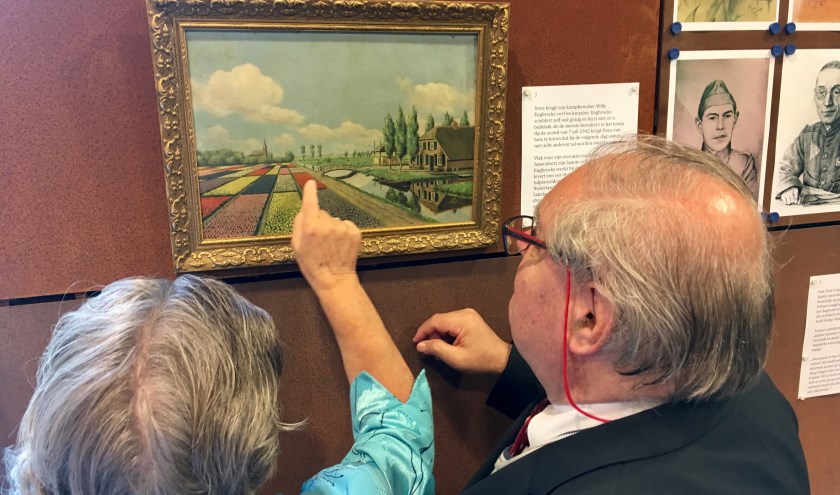
‘Uncle John’ and his tragic end is not often talked about in the family. What Micah knows about him, for example, is that he was a strict believer. And that he had poor health. John had bad legs; he walked with leg braces. That had to do with a smallpox vaccine that had gone wrong. Uncle John had a fistula at his hip.
John paints only when he has inspiration. So sometimes he doesn’t. Then he would rather sculpt or photograph. But it never takes long in those pre-war years before his father comes to call him to order. Because paintings have to be finished. They put bread on the table.
In 1940 John Dons became involved with the Orange Group. People in various cities joined the resistance group. Also in Utrecht. Couriers exchanged information among themselves. John Dons must have been a courier too, although – given the leg clamps – his cousin Micha can hardly picture it. His uncle’s later death sentence states that he would also have recruited money for the resistance group, that he was involved in arming it, and that he was also in possession of a postcard showing Princess Juliana and the children.
Forty members of the group are rounded up at the end of that first year of the war.
Quite a bit of his drawing work John Dons does while imprisoned in Camp Amersfoort.Famous is the pencil drawing Dons made here of Titus Brandsma, the Carmelite priest who was beatified by the Pope in 1985.Dons draws him in the infirmary as he lies there with open TB.
When the bank vault is disbanded, and moreover when Micha Dons gets married at that time, his father gives the painting to him.
“Store it well,” he adds. That’s what Micha does. Wrapped in newspaper, it disappears into a closet for years. In Emmen, in his living room, hangs as many as half a dozen other paintings made by a Dons. Without exception, Micha finds them beautiful and of great artistic value. Full of symbolism, mostly religious. It’s no different with the colorful bulb fields his Uncle John painted: that footpath, that must be the path of life. And the little church is situated in such a way that, while walking, you leave it … but the die preligious John Dons did not lose his faith in God in the face of death. At most, his view of the church as an institution had changed. How exactly, and who may have influenced him at Camp Amersfoort, these are questions that can never again be precisely answered.
Meanwhile, it is 2016 when the next question – unexpected, perhaps as unexpected as Engbrocks’ penance to his father – reaches Micha Dons: may Camp Amersfoort exhibit the painting?
He has to think deeply about it. That he finally says “yes” is not because he wants to draw attention to the horrors of war. Micha agrees out of respect and appreciation for his uncle John’s artistic talent. By now his landscape may be seen. And where else, he realizes, than ‘home’ at Kamp Amersfoort.
The National Monument Camp Amersfoort will display the last painting by John Dons from May 2 through May 9. In addition, a temporary exhibition about the painting, about John Dons, and about the other executed, 75 years after their deaths, will open here on July 2.
John Dons. © National Museum Kamp Amersfoort

Titus Brandsma (1881-1942), resistance hero and defender of free speech, was born in Friesland. He became a Carmelite in the monastery at Boxmeer. After his ordination to the priesthood, he received his doctorate in philosophy in Rome. In the Netherlands he taught young Carmelites in Oss. He made himself deserving locally for the development of education and culture. He became a professor at the Catholic University in Nijmegen. In his lectures he took a stand against national socialism.
As a spiritual advisor, he became involved with national newspapers and journalists.
He personally traveled to the managements to convince them not to publish Nazi propaganda. Upon returning home to Nijmegen, he was arrested. The Sicherheitsdienst decided to detain this “dangerous monk.” Via Scheveningen, Amersfoort and Kleve, he ended up in Dachau, where fellow prisoners noticed his spiritual greatness. A lethal injection ended his life.
After the war, he was posthumously awarded the Resistance Memorial Cross. Pope John Paul II beatified him in 1985 as a heroic witness of faith.

